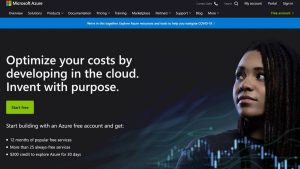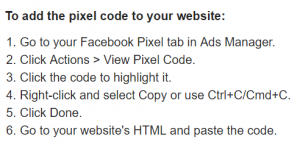Gone are the days where marketers can send out a mass message to consumers and get a large response. Sure, you might be able to snag a few people, but most will ignore generic messages, especially in the digital world. As we learn more about digital marketing and how our consumers behave, personalization has become more popular. What does personalization mean for the businessman? Personalizing digital marketing strategies will meet the needs of your customers more effectively and efficiently, making interactions faster and easier, thus increasing repeat visits.
Here we’ll go over ten sure fire ways you can add personalization to your digital marketing strategy!
1. Create Buyer Personas (Client Avatars)
All businesses have a target market, even before they begin, but have you thought about creating a specific buyer persona? This will help you create more personalized content by giving you an example of what your ideal consumer is like. Give them a name, an exact age, profession, and their likes and dislikes.
2. Understand the many platforms
We are all well aware there are many social media platforms to choose from! Facebook, Twitter, Instagram, Pinterest, LinkedIn, Google +….the list goes on. Different types of content works better on the different platforms, whether it is a picture, link, status, data, information, etc. Timing each post per platform is crucial, too. Learn more about that here.
3. Customize your content
This one piggybacks number two above. Once you know what types of content do well and when to post, you need to customize your content. As easy as it may be, don’t post the same picture on Monday to your Facebook, Twitter, and Instagram page. Creating diversity throughout your platforms will be the most effective.
4. Posting photos from events or at the organization
This is an easy one, and it can be fun too! Post photos on your social networks from different events you attend and/or weekly happenings at the office. These give your audience a little behind the scenes look of your organization. They get to see the faces behind the logo and brand.
5. Engagement
This is an important one! Interact with the community and with your audience. This, as well as #2 above, adds to the personalization by showing these people you’re not a robot behind a screen! So interact and have fun; comment, like, and share (or retweet) other’s posts and statuses. Also, respond to your consumers that mention your organization or bring up a certain issue. Something simple such as a, “Thank you, glad you enjoyed it!” or “How can we fix this problem?”
6. Customizing E-mail Subject Lines
Marketing e-mails are another great aspect of digital marketing that you can personalize, and subject lines are a great place to start. Personalized subject lines have a positive impact on your open rate. Customize it to make it more interesting than a generic subject line. You can use the customer’s name, or make the title specific to their location.
7. Segment Your E-mails
Another way to personalize the e-mails you send out is to segment your audience into different categories. Think about it; you would talk to women in a different manner than you would men. Same with the age demographic, you would have a different conversation with someone in their 20s than you would someone in their 40-50s. Communicate in the manner that your consumers will answer back.
8. Customize e-mail messages
In regards to an e-commerce website, this is an important one. Personalize the content in the e-mail to whom you’re sending it to. Track what they normally purchase, and let them know it’s on sale or if you have new items. They haven’t purchased anything in a month? Send a “We miss you!” e-mail. If they bought a dress recently, send them an email informing them of accessories to go with.
9. Images
Images are another great way to personalize your digital marketing strategy through e-mail. Use them to your advantage to create an emotional response for each of your segments.
10. Measure Your Campaigns
You can do this for social media and e-mail marketing alike; measure the results of your campaigns. Different tools can keep track of forwards, opens, responses and clicks. Facebook and Twitter, for example, have their own analytics built right in. They keep track of the views, likes, comments, shares on posts, new likes/followers each week, and what has the most engagement. You learn more about your audience by measuring campaigns, and can then continue to customize the content for your own audience.
As you can see, personalization requires not only creativity, but the understanding of data and analytics as well. With these ten tips, you are well on your way to a more personalized digital marketing strategy!
Digital & Social Articles on Business 2 Community(59)
Report Post





